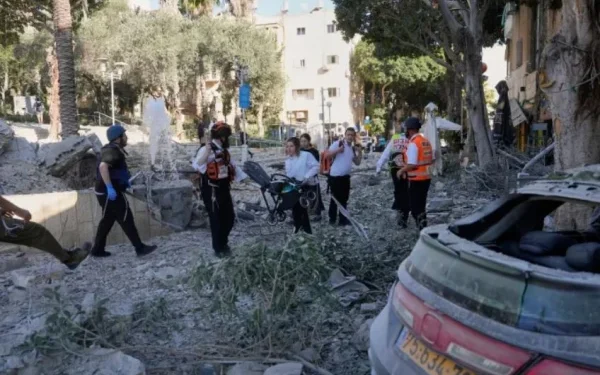In the midst of rapidly escalating tensions between the United States, Israel, and Iran, Israeli officials have suggested that the US is considering declaring a unilateral ceasefire following its recent strikes on Iranian nuclear facilities. According to intelligence sources cited by senior Israeli journalist Ronen Bergman of YNet News, this potential ceasefire could serve as a strategic pause aimed at de-escalating a volatile situation — but any further provocation by Iran could reignite joint US-Israeli military operations.
The development comes after a series of coordinated attacks reportedly targeted Iran’s most sensitive nuclear sites, intensifying fears of a broader regional war in the Middle East. Iranian officials have strongly condemned the attacks, calling them acts of aggression and vowing a decisive response at a time of their choosing.
Unilateral Ceasefire as a Strategic Maneuver
Israeli intelligence and defense officials have revealed that the United States is actively weighing a unilateral ceasefire declaration in the wake of its high-impact airstrikes on Iran’s nuclear infrastructure. The objective behind this move, they suggest, is to reduce the immediate risk of further escalation while still presenting the attack as a successful deterrent against Iran’s nuclear ambitions.
According to the assessment shared by Bergman, if Iran were to comply with the ceasefire without retaliating, both Washington and Tel Aviv could frame the event as a tactical and diplomatic victory, having effectively neutralized key elements of Iran’s nuclear program.
At the same time, officials warn that if Iran breaches the ceasefire, the US and Israel are fully prepared to launch renewed, coordinated attacks on Tehran’s sensitive military and energy infrastructure — including oil refineries, missile depots, and command facilities.
Trump’s Bold Claim: Iran’s Nuclear Sites “Destroyed”
US President Donald Trump added fuel to the fire by issuing a provocative statement on his platform Truth Social. In his post, he claimed that American forces had successfully destroyed Iran’s nuclear facilities at Fordow, Natanz, and Isfahan — three of the most prominent and heavily fortified installations in the country.
“The Fordow nuclear plant has been heavily bombed and is no longer operational,” Trump wrote. “Natanz and Isfahan have also been rendered useless. The Iranian nuclear threat has been dismantled.”
While the accuracy of these claims remains unverified by independent sources, if confirmed, this would represent the most significant direct military action against Iran’s nuclear program since the Stuxnet cyberattack over a decade ago.
Iran’s Response: “A Decision for the Military”
Iranian authorities responded swiftly, rejecting US claims and labeling the airstrikes as blatant violations of international law and Iranian sovereignty. The Iranian military’s General Staff, in a televised statement, asserted that retaliation was inevitable, but declined to provide details on the timing, scale, or nature of the counterattack.
“This aggression will not go unanswered. The Islamic Republic reserves the right to defend itself, and our response will be decisive and strategic,” a senior Iranian commander said. “The decision lies with our military leadership, and the response will be at the time and place of our choosing.”
Iran also reiterated its claim that its nuclear program is entirely peaceful, and that it continues to cooperate with the International Atomic Energy Agency (IAEA). Tehran denied that any major damage was done to its critical infrastructure.
A Deepening Crisis in the Middle East
This latest episode represents a sharp escalation in the already fraught relationship between Iran, Israel, and the United States. The multi-decade conflict, driven by ideological, strategic, and nuclear competition, has now entered a potentially more dangerous phase.
In recent years, both Israel and the US have accused Iran of covertly enriching uranium and pursuing the capability to develop nuclear weapons. Iran has consistently denied these accusations, but increasing intelligence assessments — including those leaked to international media — suggest that Iran was nearing weapons-grade uranium enrichment, prompting Washington and Tel Aviv to act.
Understanding the Key Nuclear Facilities Targeted
To understand the gravity of this development, it is important to know what each of these sites — Fordow, Natanz, and Isfahan — represents within Iran’s nuclear infrastructure:
Fordow
- Built deep under a mountain near the city of Qom.
- Designed to enrich uranium in a highly secure environment.
- Allegedly resistant to conventional airstrikes.
Natanz
- Iran’s primary uranium enrichment facility.
- Home to thousands of centrifuges.
- Previously targeted by the 2010 Stuxnet cyberattack.
Isfahan
- Houses uranium conversion facilities.
- A key node in Iran’s nuclear fuel cycle.
If Trump’s claims of successful strikes are accurate, the operational capability of Iran’s nuclear program may have been significantly degraded, though experts note that full dismantling would require sustained military action over a longer period.
International Reaction and Diplomatic Fallout
The international community is watching closely, with responses ranging from cautious optimism to outright condemnation. Some European nations have called for immediate de-escalation and resumption of diplomacy, warning that continued violence could destabilize the region and disrupt global energy supplies.
The United Nations Security Council has scheduled an emergency meeting to assess the situation, and diplomats from China, Russia, and France are pressing for restraint. Meanwhile, oil prices surged following the attack, with Brent Crude surpassing $95 per barrel amid fears of a broader war.
Israel’s Calculated Silence – Or Strategic Messaging?
While US officials have been more vocal, Israeli leadership has remained largely silent — a strategic move, perhaps, meant to maintain ambiguity around its role in the strikes. However, Israeli military sources anonymously confirmed that Israel was consulted in the operation and remains on high alert.
Israeli Prime Minister Benjamin Netanyahu has long advocated for preemptive strikes against Iranian nuclear assets. Though he has not commented publicly on the attack, sources within his cabinet suggest he views the mission as a major victory for Israeli national security.
The Risk of Retaliation: What Comes Next?
With both sides digging in, the situation remains volatile. Should Iran respond with a direct or indirect attack — such as missile strikes, drone attacks, or proxy operations through groups like Hezbollah or Houthis — the region could spiral into full-scale conflict.
Washington and Tel Aviv appear ready for this possibility, with military assets deployed across the Persian Gulf and Eastern Mediterranean. Aircraft carriers, missile defense systems, and rapid deployment forces are on standby.
Conclusion: A Pause or Prelude to War?
The idea of a unilateral ceasefire by the United States may be aimed at avoiding further escalation — but it could also be seen as a diplomatic trap. If Iran chooses restraint, the US and Israel can declare victory. But if Iran retaliates, it provides justification for even more severe military responses.
President Trump’s bold proclamation of destroying Iran’s nuclear infrastructure may be politically beneficial at home, but it carries enormous geopolitical risk. With both nations standing firm and a ceasefire hanging in the balance, the coming days will be crucial in determining whether this is a pause in hostilities — or the prelude to a regional war.

























